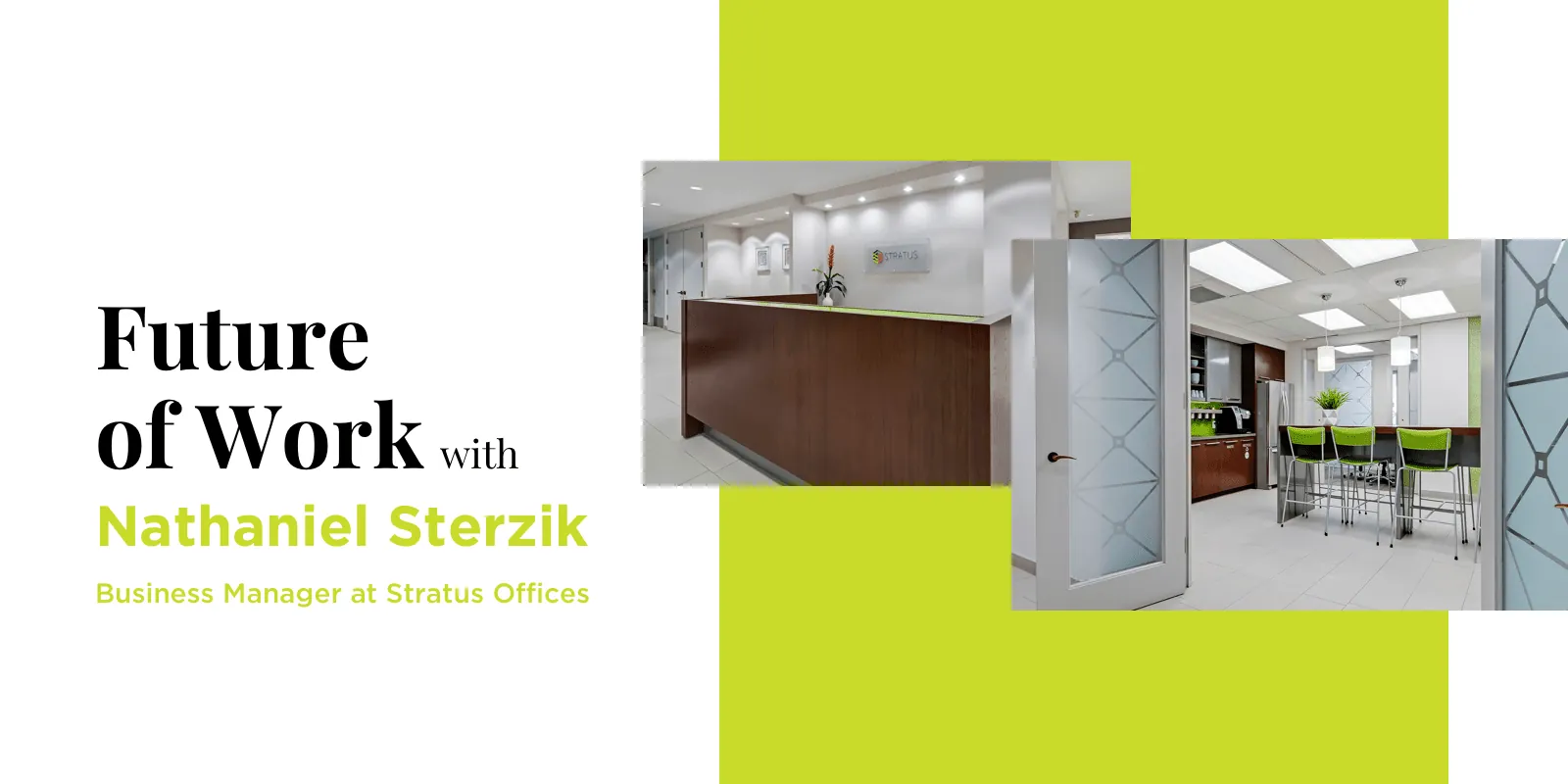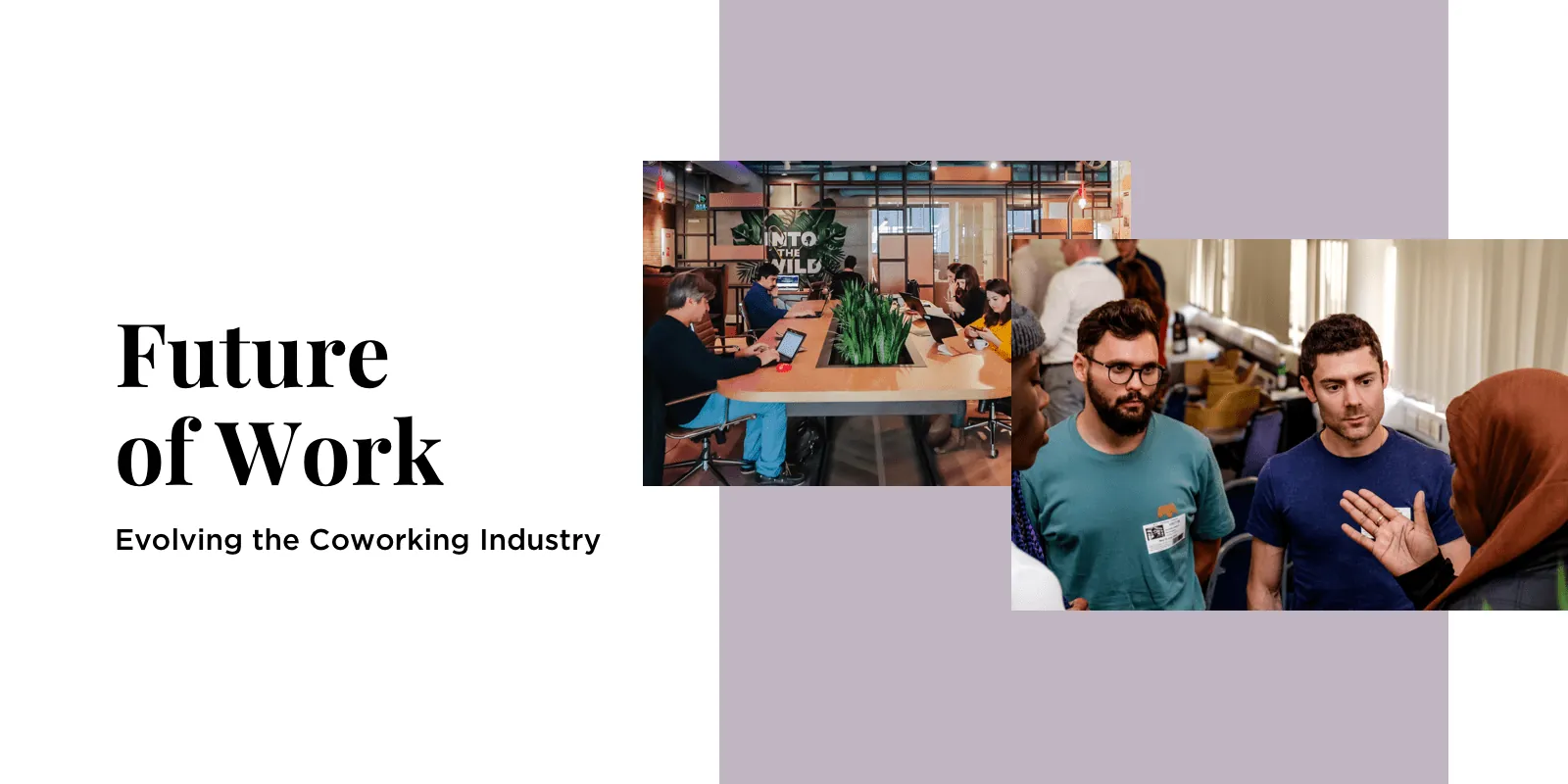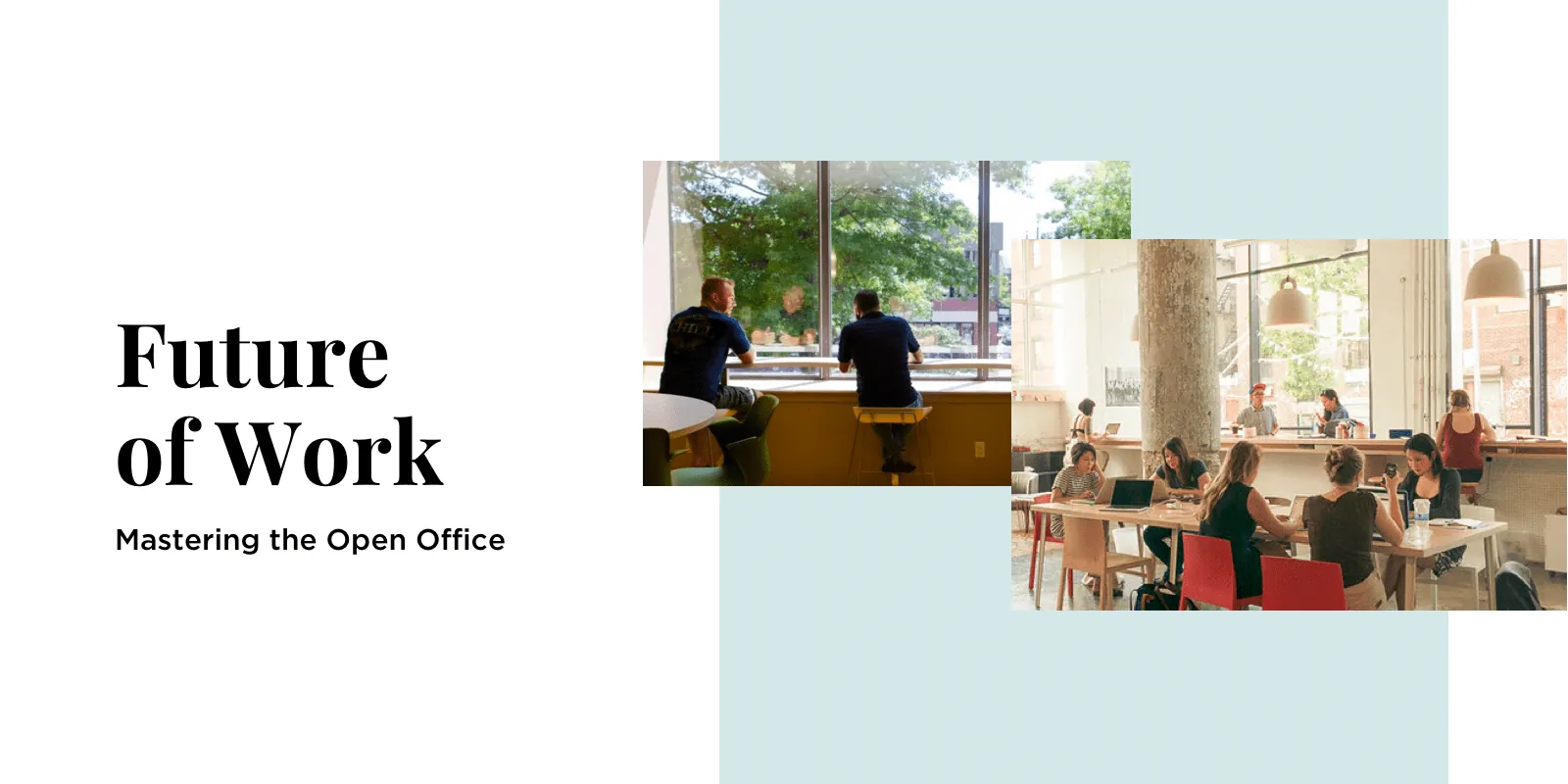
Summary
- The past year has shown that workers can be productive while working remotely
- However, the creativity boost of in-person collaboration will never be obsolete for businesses who seek to innovate
- Binary-minded executives may see a full return to the office or a shift to 100% remote work as their only options
- Those who approach their office environments with a this-or-that mentality will not survive the culture shift – the new landscape of work will exist on a spectrum.
Culture shift takes time. That is, unless a large-scale event (say, for instance, an unprecedented pandemic) disrupts the status quo. The culture of work in 2021 is radically different than it was just a year ago. Radical times call for radical change, and businesses now appear to be embracing the fact that remote work, at least in some capacity, is here to stay.
The WFH stigma needed to die. So does our reliance on binary decision-making when it comes to the workforce.
Despite openness to remote work in the pre-pandemic business landscape, there still existed a deep-rooted stigma against allowing employees to work from home.
Companies that proved the data-backed benefits of remote work were largely ignored by binary-thinking companies. Partial remote work was gaining some traction in some office environments before the COVID-19 pandemic, but there was still the nagging feeling that something sinister was afoot. Did employees who booked a day of remote work really need it? Bosses wondered whether their workers were really working, or watching Youtube. Colleagues without the option to work from home resented the fact. Popular opinion generally implied that a work-from-home gig was a cushy one.
The great work-from-home migration changed the culture of work forever. But that’s not the whole story.

Desks were separated. Clear protective partitions went up. Masks went on. Executives worried about their bottom lines. Without the ability to directly monitor employees, how would they ensure work was getting done? But soon these same businesses wondered if a return to the office would be feasible, or even desirable.
The temptation of lower office operations costs, like expensive five-year leases, might persuade binary thinking executives to reconsider their zeal to return to the office. But seeing the office as a necessary obligation and unavoidable expense in order to induce work is a mistake:
Pre-pandemic, most businesses saw the office as a place where individuals could get work done. Post-pandemic, the office will only secondarily be a place to carry out tasks or engage in routine meetings, especially for knowledge workers. They will be able to do much of that from home, thanks to the growing functionality of information and communication technologies. As a result, employees will increasingly be working in what we call the hybrid office—moving between a home work space and a traditional office building. The latter will become primarily a culture space, providing workers with a social anchor, facilitating connections, enabling learning, and fostering unscripted, innovative collaboration.
— Anne-Laure Fayard, John Weeks, and Mahwesh Khan, Harvard Business Review
A spectrum thinker will see the office as another tool in the shed, another weapon in the arsenal. A brick and mortar office is akin to a company logo: identifying, but not necessarily utilitarian. In the new world order of hybrid work, the office can be a junction for thinkers, creators, and makers. A work refuge for those who prefer a distinct separation from work and home. An anchor to the reality that workers are humans who rely on social cues for communication.
Humans love simple choices. But simple doesn’t mean best.
Binary thinking is the tendency to oversimplify complex issues into one of two distinct and oppositional choices. There are many terms for conveying this reductive reasoning: false dichotomy, black and white, this-or-that. Simple choices are perfect for simple problems, but it’s important to distinguish between snap decisions, and those that require more consideration.
Why do people resort to binary thinking when faced with difficult decisions? We’re wired to. Our brains and brain processes are ancient. They control our most primitive instincts (like fight or flight), sense danger, and protect us from life-threatening harm. Instinct drives quick and necessary decision-making. Despite millenia of brain evolution that has enabled humans to fine tune our thinking, binary options will always first appear to a person facing perceived danger.
Binary thinking helps us feel a sense of certainty. In a complex world, binary thinking can feel comforting. The uncertainty of complexity can be scary and anxiety-provoking, so it’s no wonder people fall into binary thinking, especially during uncertain times like we’re currently experiencing.Clay Drinko, Lifehack
Simple choices are desirable because they provide an easy or obvious solution. A person who is leaning one way more than another will find a binary decision easy. When neither option is desirable, or if both choices include unignorable drawbacks, binary thinking leads to frustration, pain, and loss. Binary choices reduce complex issues to two choices. In reality, there is often a full spectrum of choice living between the two extremes.
The COVID-19 pandemic has reminded us that we are vulnerable to the whims of Mother Nature, and that we don’t actually have as much control as we formerly thought. Threats to health, connection, and livelihood are very real at the current moment. Understandably, many are defaulting to binary decision-making as shorthand for ensuring safety.
The office-to-remote workplace dichotomy
From this pandemic has emerged a clear dichotomy: to return to the office, or make permanent the transition to fully remote work? Companies that once demanded full-time presence in the office are now drafting transition plans to become a virtual office. Unfortunately, this binary thinking is symptomatic of the trying times we are enduring.
While productivity and employee morale has stayed consistent through the pandemic, the remote work experiment was a bandaid, binary response to a real, physically threatening emergency. Without the emergency of an unprecedented pandemic to fuel long hours in the home office, what would the landscape of remote work look like?
The Guardian’s Gene Marks recently pointed to the sudden real estate scoop-up by larger tech companies as a sign of what’s to come:
[Tech companies] also know that an office, a workspace, a shared environment where humans interact face to face over coffee and donuts is a crucial part of any business. They understand that people working remotely do not connect, innovate, share ideas, debate, argue and brainstorm like they do when they’re together. They get that a company’s culture of innovation can’t be built from people’s homes, but from a place where people congregate.Gene Marks, The Guardian
The spectrum of work post-pandemic will be more flexible than ever.
The #workfromanywhere movement is also taking hold for those offered a fully remote schedule. Instead of thinking of work as something that only happens in the office or in the home, employees can work remotely from anywhere: a coffee shop, a friend’s house, a tropical country. While most employers aren’t ready to entertain this idea, the #WFA movement shows that the spectrum of work is not black and white, and potentially even non-linear.
The spectrum of work may include all-remote, in-office, or a hybrid work model. Within the realm of a virtual office, there are various ways to implement a viable workspace plan that also includes in-person collaboration.
Leaders need to meaningfully see the range of discovered and undiscovered options available when it comes to planning a remote-hybrid workforce. Particularly when decisions affect the wellbeing and daily routines of many, emotionally intelligent choices need to supersede logistical and financial ease.
True leadership means implementing hybrid, iterative solutions to complex problems.
The future of work is hybrid. The hybrid workplace offers a blend of in-office work, and the flexibility to work remotely too.
Hybrid work models that are managed effectively allow organizations to define a future of work that is more flexible, digital and rewarding for their employees. This results in a huge number of business benefits from better access to top talent, happier employees and improved innovation.Your Definitive Guide to Managing a Hybrid Workforce, Genesis Integration
What are the benefits of a hybrid workforce?
1. Improved productivity
The office is a place where employees get…distracted? According to new research, the workplace is actually more distracting than motivating, to the tune of $600 billion lost per year.
Since being forced into the digital workplace, data shows that many businesses are at least as productive as they were in-office. In fact, 85% of businesses report higher productivity from remote teams. Now a year into the pandemic, many employees are feeling the crunch of full time remote work. A hybrid work model is an elegant spectrum solution to the binary dilemma.
2. Employee happiness
Employees are happier when they have the choice of where to work. There is dignity in affording even junior employees the respect and autonomy of a flexible schedule.
There are also practical benefits for employees. Less commuting reduces stress. Employees with the option to work remotely tend to take fewer sick days. And no one can discredit the relief of being able to throw on a quick midday load of laundry. These conveniences add up to employees that are better rested, more focused, and happier to be working.
3. Operations cost savings
The hybrid work model means less cost savings on leasing, managing, and supplying a brick and mortar office. The benefits of keeping a dedicated or downsized office are plentiful, but there are other options for companies eyeing the expenses skeptically.
Many businesses now utilize off-site space as their office, in the form of coworking spaces. In this model, employees could book a hot desk for the day, or meet in day rate conference rooms to collaborate. Coworking spaces are not all created equally, with some offering room and desk rentals only to customers in a specific industry. Fostering a collaborative coworking community can include your staff, as well as other industry professionals.
Another option is to make your office a sort of hybrid coworking space. Invite allied businesses to work alongside your staff, make connections, and broaden your reach across like-minded companies. In this model, your physical office becomes an exclusive coworking hub, powered by coworking software that can handle internal and external workers. This can help recuperate costs, and a simple app can handle the logistics.
4. Environmental benefits
It’s no surprise that fewer workers commuting every day has resulted in environmental benefits. But there are many other ways a hybrid-remote schedule can reduce the strain on the planet. From less paper usage in offices, to greater opportunity for workers to choose their food more selectively, to better recycling at home, there are many environmental reasons to implement a hybrid work schedule.
How to implement a hybrid office plan (with spectrum thinking)
How does a hybrid virtual office schedule work? The best solution is what works for your company and employees. What works for a startup might not work for Google. What works for salespeople might not be the best solution for developers.
1. Resist your binary brain
Part of spectrum decision-making is being comfortable making decisions despite a lack of a clear blueprint. The choice to provide a hybrid work option to employees means accepting that things could change again in the future. Flexibility and willingness to iterate is the key to success.
The reality is that all of this is unprecedented. Calculated uncertainty, iterative decisions, and generosity to employees may feel risky, but the choice to go hybrid is less dangerous than trying to revert to the old days. Those days are dead.
2. Design a hybrid workspace
Implementing an effective hybrid framework depends on a workplace design built around the new climate of work in 2021. We now have godlike technology for communication, task management, and handling the logistics of a hybrid workforce.
Physical space
One factor that is important to consider is the capacity of your office. Keep in mind that even when return to work is possible, many people will not feel comfortable in a crowded indoor environment. Starting with a significantly reduced capacity will help workers feel more comfortable as they return to in-person work.
Scheduling
Will your workforce split their time between home and the office on a scheduled basis, or will they book space as needed? Perhaps the office will be for meetings only, with the focus work happening from the home. There is also the option of letting your workforce decide what’s best for them. Some people prefer working from home; others need the office. Gauging what is right for your team is key to creating an effective hybrid work plan.
3. Measure everything
There’s a secret hybrid recipe that works for your business: You just have to refine the ingredients until you create the perfect dish. The best way to determine what’s working, and what’s not working, is to measure everything.
What metrics can you use to measure effectiveness when it comes to a hybrid workspace?
- Employee satisfaction, via informal canvassing or a secret ballot survey
- Productivity, using pre-pandemic in-office metrics and remote metrics to inform your position
- Revenue and cost savings
4. Get the right tools
To effectively move to hybrid, businesses will need a different set of tools. With fewer people in the office, companies will need a system for contactless deliveries. Booking software for shared meeting space and dedicated desks will also help a hybrid workforce get the office equipment they need. For many companies, an efficient desk reservation system can facilitate a smooth return to work in the office.
Here is our list of the best productivity tools for managing a hybrid office:
Slack is the essential communication platform in 2021, providing a modern MSN Messenger-style chat space for companies and teams. Slack is where work happens in the age of hybrid work models. The Premium plan offers unlimited chat archives, group video calls, screen sharing, and more.
Zoom is a video conferencing app that connects teams across the globe. This tool is essential to creating a virtual office that can run independently of in-person meetings.
The king of translation for web APIs, Zapier is an essential tool to automate and integrate web applications.
All your documents, spreadsheets, slides and more in one central location. Near or far, collaboration has never been easier.
A spectrum approach to the modern workforce dilemma
The pandemic forced businesses to put their humanity front and center. The last year has been (and had to be) all about safety. That meant isolation, and more emphasis on mental health. Effectively, COVID-19 put all of us, executives and decision-makers included, into a collective timeout.
It has been a moment to reflect on the pandemic’s origins, the polarizing times in which we live, and the never-ending daily grind the workforce faces. With time to stop and pause, there can finally be objective analysis into what went wrong, and the right path forward. Despite the still-present dangers of the pandemic, it’s essential to resist the urge to think about a return to regular life on a binary scale. Wherever the workforce goes from here, it will be on a spectrum.



